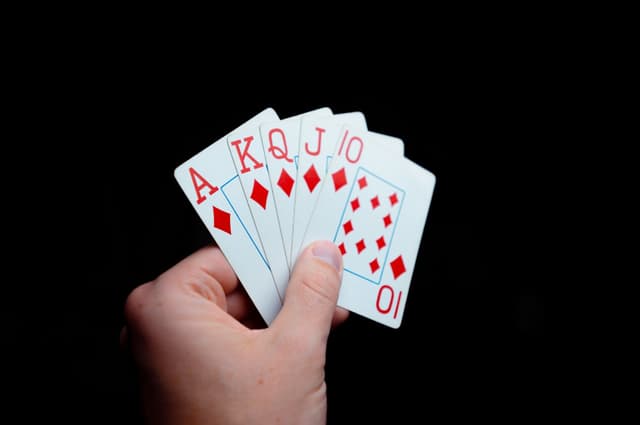Design Dreams in Public with AI: How Brands Harness Surreal Visuals to Stay Memorable
Ever seen an ad that felt like a dream rendered in pixels? A chair floating in a skyline, syrupy letters, or stairs spiraling into the clouds—surreal visuals pull you in. They blur logic and emotion, making you stop, stare, and remember.
This dreamlike branding thrives on a kind of impossible beauty—real enough to trust, strange enough to question. And with tools like Dreamina’s AI photo generator, turning surreal ideas into cinematic scenes has never been easier. These platforms let brands paint with fantasy, creating images that resonate emotionally instead of relying on reason.
The new language of dreamlike branding
Surrealism is not limited to fashion magazines or art museums in today's visual culture. It's the pulse of contemporary digital storytelling. Brands are trading in flat realism for elastic imagination, images that defy physics and logic but ring emotionally authentic.Some dreamlike design cliches include:
- Objects melting, stretching, or defying gravity in space
- Buildings folding into clouds or liquid surfaces
- Silhouettes of humans blurring with natural surfaces like glass or smoke
- Intersecting scales, such as a mountain-sized tea cup.
Why surrealism sticks in memory
Our brains are hungry for novelty. If something defies reason but strikes an emotional chord, it becomes lodged in the memory. Surreal advertising takes advantage of this psychological sleight of hand. It doesn't try to be comprehensible, it tries to be felt.A perfume ad showing a bottle dissolving into a galaxy doesn’t explain the scent. It feels like it. A tech brand showing users surfing through luminous data waves isn’t selling hardware; it’s selling the thrill of possibility.That’s the genius of surreal branding: it transforms emotion into imagery.
AI: The modern muse for the impossible
Artificial intelligence is the digital painter at work behind much of today's dreamscapes. Rather than drawing or posing, designers are now able to explain their surreal ideas in words, and AI renders them as photorealistic paintings.For instance, an AI logo generator can convert a vague emotion into a visual identity, from flowing, liquid forms evoking serene creativity to vibrant, metallic motifs reflecting advanced precision. These logos not only look great, but they also spring to life.This artistic choice allows brands to leverage abstract storytelling without the costs or budgets to build a production crew. In fact, AI is the bridge between surreal thinking and real-world art.
Dreamina: the platform for the impossible
Dreamina is more than just another set of AI tools. It is a gateway to visual imagination. It gives creators the ability to discover visuals that feel as though they come straight from their dream journal. Regardless of whether you are a marketer, artist, or brand designer, Dreamina allows you to create worlds that disappear into your audience's consciousness.Let’s explore how to use Dreamina’s creative flow to design surreal visuals that stay unforgettable.
Realizing the impossible with Dreamina
Step 1: Write a text prompt
Access Dreamina and begin the creative process by formulating a descriptive prompt. List the feelings, textures, and experiences you want the image to offer. The more precise the choice of words, the more visceral the visual experience will be.Example: a typewriter lit up against the backdrop of a library that glows with the light of the moon, its keys producing letters forged by mist as the machine glowed with soft golden light and pages danced around it.Dreamina changes words into emotion, emotion into feeling, and feeling into wondrous images.
Step 2: Adjust parameters and generate
Once your prompt is satisfactory, continue to improve your creative context with your favorite model, your aspect ratio, and the size of the image you want. Dreamina also has sharp resolution options like 1K or 2K matched with more precise views. Once you are happy with your selections, it's time to simply click the Dreamina icon to create your creation. In less than a second, your dream image was a reality.

Step 3: Customize and download
Once you have the image created, you can edit your image with Dreamina's Inpaint, Expand, Remove, and retouch features. These are excellent tools to shape emotion deliberately, adjust rogue lighting, add fog for suspense, or create a new spatial perspective. Once you are finished, click "Download" and your image is saved. In just minutes, you created something from your imagination into a tangible memory that seems to make each utensil feel unreal, yet human.

Editing emotion with AI
Even after you've designed your world of surrealism, tone of feeling counts. An AI image editor allows you to adjust the mood, warm colors to create closeness, cool hues to create mystery, or blurred edges to create dreamy serenity.Every subtle adjustment redefines how individuals feel your design. For surreal brand identities, editing is not correction, it's sculpting emotion.
The magic of the unreal in modern advertising
Brands that are brave enough to be surreal don't just sell, they mesmerize. Among a tide of similar-looking ads, the impossible picture gets noticed. Surrealism encourages viewers to pause, interpret, and daydream, and build an unconscious bond with the brand.As colors wander, words float, and gravity disappears, something special occurs: the brand becomes unlimited.
Conclusion
Surrealism as a branding form is no longer a specialty art form, it's the new language of attention. With products such as Dreamina, it's within reach for anyone willing to turn emotion into art. Powered by its AI tools, Dreamina enables creators to construct impossible worlds that are nonetheless profoundly human.Because ultimately, what people remember isn't logic, it's wonder. And the most memorable brands are the ones that have the courage to design dreams in public.













